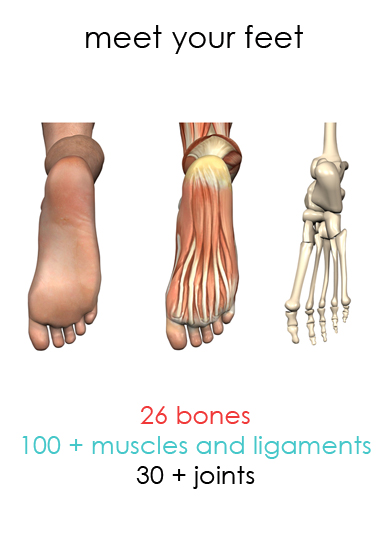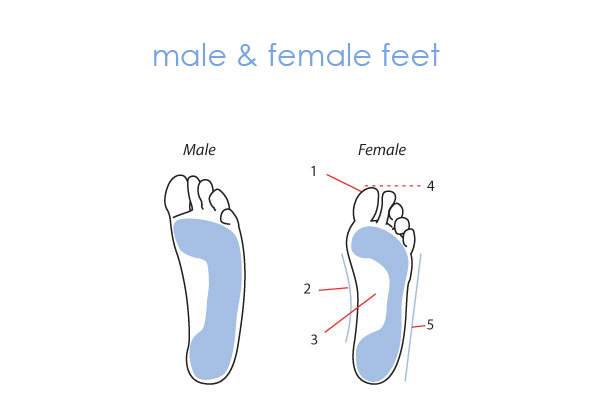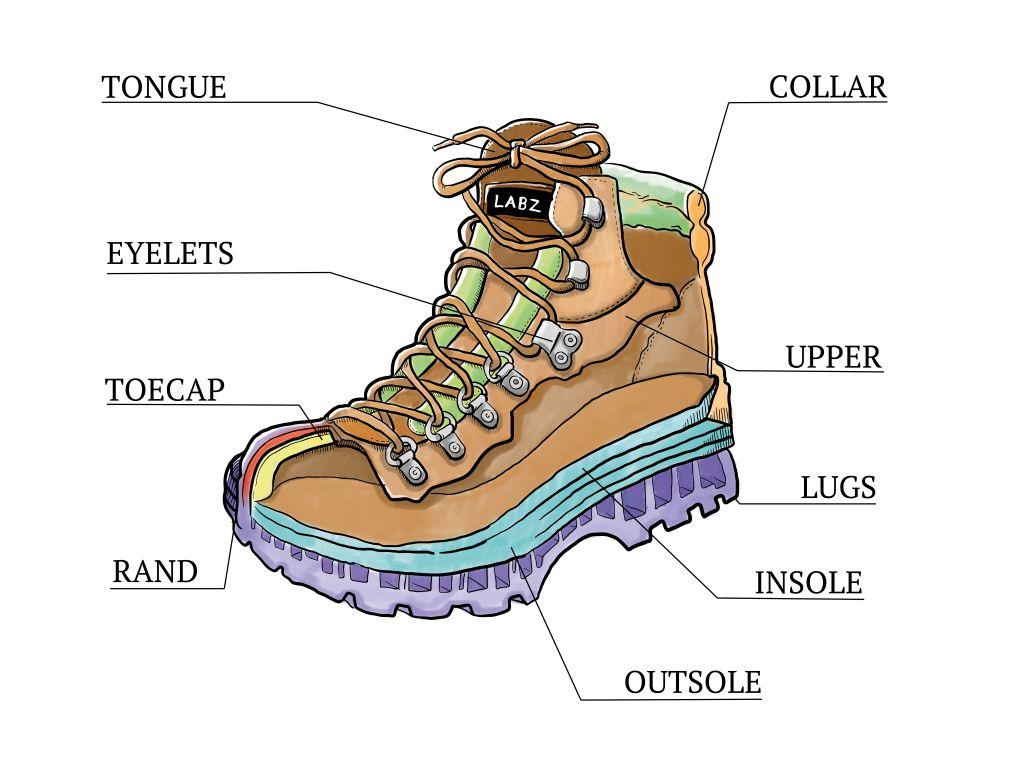
Tips For Best Hiking Boots
For Women
Choosing the best hiking boots for women is a confusing and sometimes expensive proposition until you find the pair that makes your trail time comfortable and safe.
Hiking For Her is pleased to bring you this Ultimate Guide On Choosing The Best Hiking Boots For Women, brimming with facts and specific advice, written by James Menta of Solelabz.
It's not often that you have a chance to read pearls of wisdom from a hiker who also happens to be extremely knowledgeable about choosing the best hiking boots for women.
Soak up this wisdom, and then apply it to your next boot buying expedition.
Thank you, Solelabz!
Disclosure: There is no affiliate relationship between Solelabz and Hiking For Her. The only intention of this guide is to bring you reliable information on how to choose the best hiking boots for your hard working feet.
- All images on this page belong to Solelabz and are used with permission.
If you have narrow feet, skip over to these tips on finding the best pair of women's hiking boots for you.
Wide feet? Try these tips!
The Ultimate Guide:
Choosing The Best Hiking Boots
For Women
You’ve probably heard this one before:
“A single step is the beginning of every journey”.
Knowing that the average adult takes between 4,000 and 6,000 steps every day (it’s a given that serious hikers take many more), really puts the footwear choice into perspective.
In the guide, we’ll especially focus on the difference between choosing the right hiking footwear for him and her.
With so many options on the market, you really need to get your hiking boots ABCs down in order to make a completely informed choice.
I’ll pack this guide full of tips to get you there.
All you have to do is take that first step.
Intricate mechanical structure
that is our foot
Our feet are incredibly strong and delicate at the same time.
That’s why you want to complement them with the best pair of hiking boots you can possibly find.
Here’s what makes them tick:
- 19 muscles
- 107 ligaments
- Over 30 joints
- 26 bones (one foot), that’s 52 in boot feet which make for about 25 percent of all the bones in the human body.
Shocking, right?
 Photo provided by Solelabz
Photo provided by SolelabzSo, ¼ of our entire skeleton is in our feet.
- Little known fact: if those bones fall out of alignment, the rest of the body will quickly follow.
The soles of our feet contain more sensory nerve endings and sweat glands (250 K) than any other part of our body.
I’ll button it up without even boring you with nitty-gritty details like the hundreds of tons of pressure our feet have to endure every single day…
Differences between
male and female feet
Women have 4 times more feet problems than men. Especially the active women, like hikers.
The good news is we can prevent all of those issues by simply picking a good pair of hiking boots.
But we’ll start “barefooted” for now by addressing some male/female feet differences.
A woman's foot is not a smaller version of a man’s foot.
The first relevant list I found was published in the Journal of American College of Sports Medicine.
Main differences (see the image after the list):
- Women have thicker ankles and narrower heels than men (proportionally to size of the foot).
- The big toe is less eminent. (1)
- There’s more of a curve to the shape of the foot. (2)
- Their ankles are ¼ “closer to the ground.
- Women have higher arches, so they require more support. (3)
- Smaller feet for any given height of a person. (4)
- The outer line is shorter. (5)
- Their toes are smaller and thinner.
- Female calves are higher and thicker.
- Of course, female feet are smaller in proportion to male feet.
 Photo provided by Solelabz
Photo provided by SolelabzOne study showed that 90% of women in the US wear shoes that are half an inch smaller than their foot size.
- They try to avoid the “slop”
effect in the ankle area and go smaller than they should.
We’ll talk about proper fit at length later, though.
With that out of the way, we can start dealing with some specific footwear qualities, tips and recommendations.
Advantages of hiking boots
over other footwear
Here are the benefits you’ll reap by putting hiking boots between your feet and the trail:
- Optimal protection on rough terrains
- Durability
- Waterproof membrane that’ll keep your feet dry even during creek and river crossings
- Thick and strong soles that provide a biting grip and stability on uneven terrains
- Pronounced lugs that’ll offer superior traction on slippery surfaces such as mud or snow
- Proper ankle support, especially while carrying heavier loads
- Better protection from crawlies like snakes
- More compatible with orthopedic insoles
Bottom line, hiking boots are a preferred choice if:
- You intend to embark on a longer hike
- You’re going over rough, uneven and generally inhospitable terrain
- You have a moderately heavy to heavy load
- You’re a beginner hiker
- You have a pre-existing foot condition (like plantar fasciitis)
- You’re prone to rolling your ankles and tweaking the knees
- Your leg muscles aren’t strong enough to withstand the stress of hiking
Some hikers use trail running shoes and
tactical boots as an alternative to heavy duty hiking footwear.
You can certainly get away with it if you’re a seasoned hiker (I’ve done it myself).
If you’re just starting out, however, I wouldn’t recommend these kinds of hiking “acrobatics”.
Hiking boots
inside and out
Let’s delve a little deeper and take a peek at the anatomy of a hiking boot.
 Photo provided by Solelabz
Photo provided by Solelabz
Upper materials
The upper material will influence some key features of your boots.
I’m talking the overall weight, durability and water-resistance.
These are the most common materials used.
Leather
We have to differentiate between full-grain, split-grain and nubuck leather.
Full-grain features good resistance to abrasions and water alongside unparalleled durability.
Split-grain is a mixture with nylon mesh for extra ventilation and lighter weight.
Nubuck resembles suede, and it’s considered to be a “buffed” full-grain.
Synthetics
They dry up really fast, they’re lightweight and cheaper than leather.
They also have little-to-none break-in time.
Vegan
These uppers are made of vegan-friendly materials, meaning they don’t feature any animal by-products and ingredients.
Midsoles
They are the parts between the outsole and the footbed of the boot.
Their main purpose is shock-buffering, but they also give additional cushion to the boot and determine its stiffness.
You can choose between:
- EVA – Short for ethylene vinyl acetate, this is the lighter and more flexible option of the two. It’s also cheaper.
- Polyurethane – Firmer, rigid and more durable. These kind of boots take way more time to break-in.
Outsoles
Rubber has proven to be the best material for the outsoles of hiking footwear.
Here’s what we need to pay attention to:
- Lug pattern – Lugs are simply explained as bumps on the outsoles designed for giving traction and gripping the ground. For hiking, we’ll want smaller lugs that are spaced widely for optimal mud removal
- Heel break – The name gives it away pretty much. It’s a lugless, specially designed heel area found in hiking boots for better downhill control and stability.
Finding the perfect fit for your feet
Without beating around the bush too much, you want your hiking boots to fit. End of story.
Some of the most common feet conditions caused by tight footwear are:
- Plantar fasciitis (according to one study, 10% of adult Americans suffer chronic heel pain resulting from this malady)
- Joints/tendons stress
- Blisters and corns
- Blackened/ingrown toenails
- Hammer/crossover toes…
This is just top of the list.
We can mitigate and prevent all of these by finding the boot that fits just right.
This is what your fitting session
should look like
- Feet swell up during the day, so do your shoe-shopping in the afternoon and wear the socks that you plan to wear on the trail.
- If you use any orthotics, bring them along and try the boot with these inside.
- Pull the footbed out and compare it to your foot. Do they match in length/width?
- There should be enough room for your index finger between the back part of the boot and your heel.
- As you lace up, feel if your foot is moving forward (it should).
- Your fingers should have enough room in the toe box area. They also shouldn’t touch the front end of the boot.
- See how the boots feel when you walk all laced up.
- If the back part of the boot rubs on your heel, you need a different size.
You're ready to get yourself
a fresh pair of hiking boots
We’ve answered some serious questions about the best hiking boots for women today.
Now you know:
- How your feet function
- How they’re different from men’s feet
- When to choose hiking boots over shoes or trail runners
- What to look for in a good pair and how to match them to your surroundings and circumstances
- How to get a perfect fit
Final thoughts on finding
the best hiking boots for women
Somebody once told me that a dream about shoes means you’re down to earth and well grounded. Well, those are the same qualities that make a good hiker.
I can’t be laser precise on what boots/shoes to get but I hope we took a step in the right direction in this guide. If there’s one thing that you should take away is the seriousness of the decision of footwear choice.
It makes all the difference.
Choose wisely and stay safe.
And then take good care of them to make them last as long as possible, using these tips.
Also consider what a pair of the best hiking insoles can do for your feet.
Home page > Best Hiking Tips >
Best Hiking Boots For Women
You might also like some Foot Injury Prevention Tips
|
I get emails all the time about what I wear, eat, carry and love to use on the trail. That's
why I provide affiliate links to you: the best gear that I use myself and have seen used by other hikers is instantly
available for your consideration, and the gear company sends a few
pennies per dollar to this reader-supported hiking website. There is no added cost to you! Everyone ends up a winner: Great gear for you, strong gear companies, and more free hiking tips for everyone. Thanks very much for your support. It's warmly and sincerely appreciated. It also helps send these hiking tips to all your virtual trail buddies around the globe. |
 |

